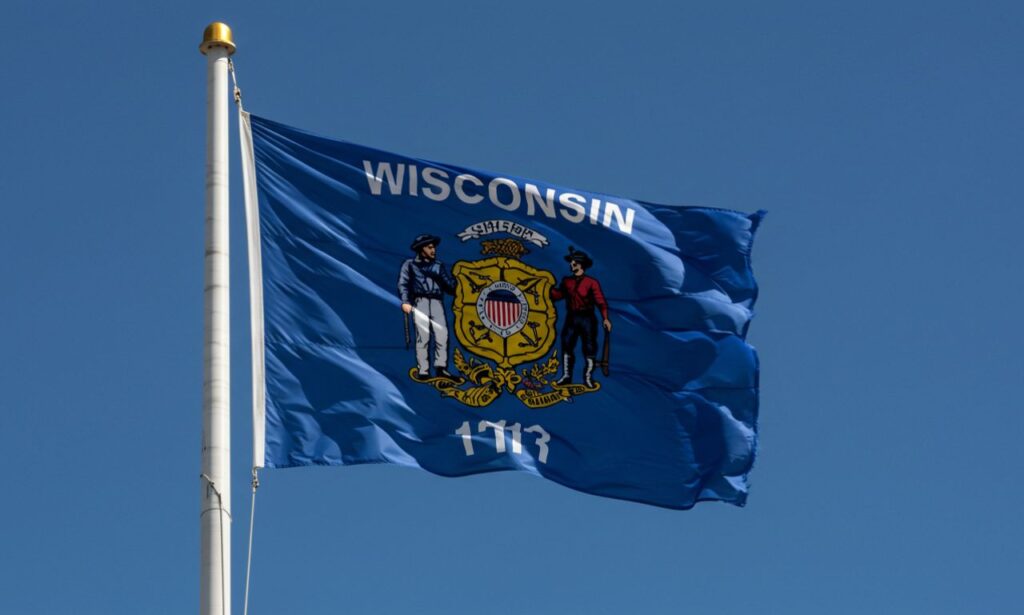When you see Wisconsin flags at half mast, it’s a powerful visual signal that the state is collectively mourning, remembering, or honoring someone or something significant. Whether it’s the passing of a public official, a national tragedy, or a local hero, the act of lowering flags to half-staff is steeped in respect and solemnity.
In this article, we explore the most recent flag-lowering orders in Wisconsin, the reasons behind such proclamations, the official process involved, and how citizens can stay informed about these important tributes.
Wisconsin Flags Half Mast: What It Means
Flying the American or state flag at half-mast—also called half-staff—is a sign of mourning, remembrance, or respect. In Wisconsin, this gesture is taken seriously, with clear guidelines on when and why it occurs.
Typically, flags are flown at half-mast to honor:
-
Fallen military personnel
-
Police officers or first responders who died in the line of duty
-
National tragedies or mass casualty events
-
Deaths of state or national political figures
-
Memorial days such as Peace Officers Memorial Day or Patriot Day
These occasions are marked by either federal or state proclamations, depending on the nature of the event.
Recent Orders for Flags at Half Mast in Wisconsin
The Office of the Governor of Wisconsin regularly issues executive orders to lower flags throughout the state. Some of the most recent examples include:
-
Fallen Local Heroes: Flags were lowered in 2025 to honor the death of firefighters and police officers who died in service.
-
Memorial Dates: On days such as Memorial Day or 9/11, flags are lowered as part of national observance.
-
Prominent Deaths: When influential Wisconsinites or former state leaders pass away, the governor may issue a statewide flag-lowering order.
To stay updated, citizens can check the Governor’s Office Newsroom or sign up for alerts on the official state website.
How Are Flag-Lowering Decisions Made in Wisconsin?
In Wisconsin, authority to order flags at half-mast lies with the Governor. However, these orders can also originate from the President of the United States. If the President calls for a national day of mourning, Wisconsin complies as part of federal protocol.
For state-specific incidents, the Governor may issue an Executive Order detailing:
-
The name of the individual or event being honored
-
The start and end dates for the flag-lowering
-
Any special instructions for municipal buildings or state properties
These proclamations are legally binding on all state-run facilities, including schools, government offices, and public buildings.
Flag Etiquette for Citizens and Businesses
When Wisconsin flags are at half-mast, the etiquette extends beyond government buildings. Private individuals, businesses, and organizations are encouraged—but not legally required—to follow suit. Proper flag protocol includes:
-
Raising the flag to the top of the staff before lowering it to half-mast
-
Returning the flag to full-staff before lowering it for the day
-
Ensuring that the flag is well-maintained, clean, and properly lit if displayed overnight
Flag etiquette is seen as a civic gesture, one that reflects unity and shared respect across the community.
Common Dates When Wisconsin Flags Are Lowered
Besides unique events or deaths, there are recurring days each year when Wisconsin flags are flown at half-staff:
-
Peace Officers Memorial Day (May 15)
-
Memorial Day (Last Monday in May—only until noon)
-
Patriot Day (September 11)
-
National Fallen Firefighters Memorial Day (First Sunday in October)
-
Pearl Harbor Remembrance Day (December 7)
These dates are set by federal statute or long-standing tradition, and the Governor’s office typically issues a reminder.
How Long Do Flags Stay at Half Mast in Wisconsin?
The duration for which flags remain at half-mast in Wisconsin depends on the proclamation details. Here are common durations:
-
Until interment: For current or former state leaders
-
One day: For national tragedies or remembrance days
-
A weekend or extended period: For mass casualty events or natural disasters
If no duration is stated, it’s typically assumed to be from sunrise to sunset on the day of the observance.
Historical Moments When Wisconsin Flags Were Lowered
Wisconsin has seen several historical moments where flags were lowered statewide. Notable events include:
-
September 11, 2001: A national tragedy that led to long-term flag-lowering guidelines on Patriot Day.
-
COVID-19 Pandemic (2020–2021): Flags were repeatedly lowered to honor the lives lost, especially frontline workers and healthcare staff.
-
Mass Shootings or Police Fatalities: Incidents within or outside Wisconsin sometimes prompt the Governor to show solidarity and mourning.
These gestures underscore how closely state residents follow national sentiment and local impact.
Communication and Public Awareness
Awareness of why flags are at half-mast is vital for public understanding. The Wisconsin Department of Administration often helps disseminate updates, while news outlets and community boards share the reasons behind such orders.
Additionally, digital signboards on highways, city government social media pages, and local radio often announce when flags are lowered, ensuring that the public remains informed and involved.
Wisconsin Flags Half Mast and Schools
Public schools and universities in Wisconsin are also expected to observe half-mast orders issued by the Governor. Many school districts use the moment to educate students on the importance of the gesture.
For example, teachers might hold brief discussions or moments of silence to acknowledge who is being honored. These lessons instill civic respect and help younger generations understand state and national traditions.
The Symbolism Behind the Half-Mast Gesture
Lowering the flag is a gesture loaded with symbolism:
-
Grief and mourning: It visually represents the weight of loss.
-
Honor and respect: It signals a collective moment of tribute.
-
Unity and recognition: Everyone, from citizens to officials, is reminded of a shared experience or value.
In times of tragedy, seeing the Wisconsin flag at half-mast often sparks reflection and a moment of pause, uniting people across political and social lines.
How to Request a Flag-Lowering in Wisconsin
While most proclamations come from top officials, individuals or organizations can request the Governor to consider a flag-lowering in honor of a notable person or event.
To do this:
-
Submit a formal written request to the Governor’s Office.
-
Provide full details about the individual or incident.
-
Include proposed dates and reasons for the request.
Each request is reviewed carefully, and if approved, an executive order is issued. Though not all requests are granted, the process allows the public to engage in state traditions meaningfully.
Technology and Flag Notifications
Many Wisconsin residents now rely on mobile apps or web notifications to stay informed. Tools like:
-
Email alerts from the Wisconsin Department of Administration
-
National observance calendars
These resources ensure people know when and why flags are lowered, helping them participate more consciously in moments of public mourning or respect.
Final Thought
The tradition of lowering Wisconsin flags to half mast remains deeply relevant today. In a world filled with constant noise and change, this simple, visual act reminds us to pause, remember, and honor those who have shaped or served our state and nation.
It’s more than protocol—it’s a shared language of grief, honor, and community. Whether you’re driving past a school, a state building, or even a neighbor’s house, seeing a flag at half-mast is a silent but powerful message. It says, “We remember.”






